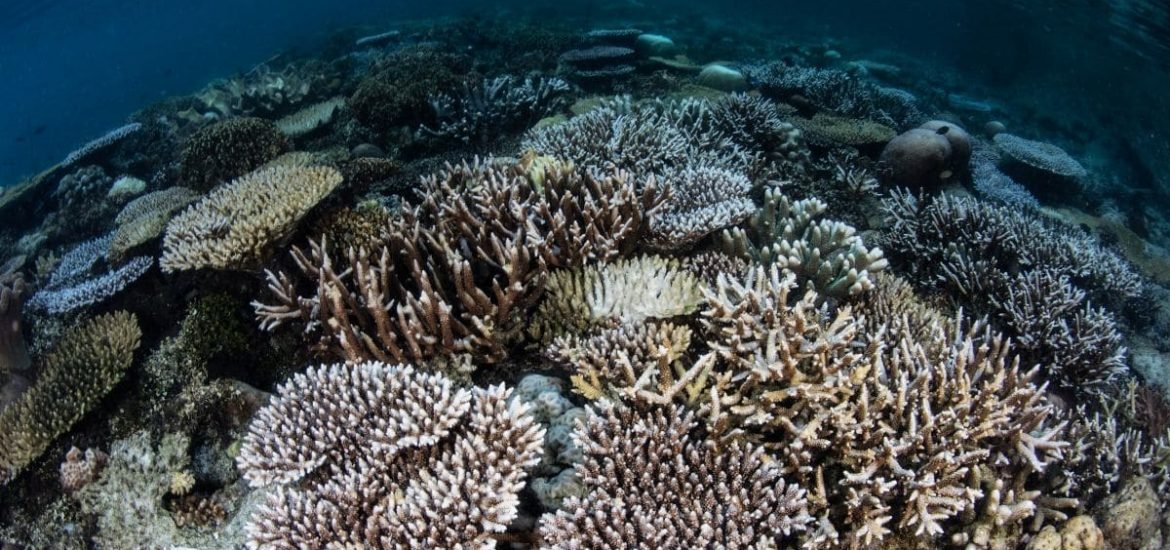
Tropical coral reefs are “in jeopardy” unless we take drastic actions to reduce greenhouse gas emissions, according to a landmark study on how to save coral reefs in the Indian and Pacific Oceans. The report, produced by more than 80 marine researchers worldwide — including from the Wildlife Conservation Society, other non-profit organizations, and governmental agencies — was published on 12 August in Nature Ecology & Evolution (1).
The authors identify key threats that must be addressed to sustain a network of functioning reefs in the Indo-Pacific to avoid ecosystem collapse. To come up with the data, the researchers painstakingly examined more than 2,500 reefs across 44 countries. Most of the reefs were visually examined and data was collected using special measuring tapes and waterproof paper and pencils.
While this meant spending up to six hours underwater each day – an arduous task, the researchers’ efforts were not without huge gains. The resulting dataset contains incredible detail on over one million individual corals including information on the size and health of more than 300 unique species.
“There are efforts to use drones or satellites to collect this information, but you cannot get the high resolution needed to assess the vital complex architecture of reefs unless you are in the water,” says co-author Dr Joleah Lamb, assistant professor of ecology and evolutionary biology at the University of California, Irvine School of Biological Sciences.
Widespread bleaching was observed, a visible indication of the effects of rising temperatures. When the water temperature is too warm, corals expel the algae they rely upon for nutrients leading to whitening — and eventually, starvation.
In addition, higher abundances of framework-building corals were typically associated with:
- weaker thermal disturbances and longer intervals for potential recovery
- slower human population growth
- reduced access by human settlements and markets
- less nearby agriculture.
How to save coral reefs
The authors suggest it’s not too late if to save the reefs if three strategies are immediately implemented:
- protecting reefs from further exposure to human impacts (around 17 per cent), including carbon emissions (even those far away from the reefs)
- helping to save the 54 per cent of damaged reefs with the capacity to recover
- coastal cities should transition away from depending on reefs that are too far gone to save.
Many coastal areas — including a number of communities in Hawaii, American Samoa and Guam — face severe impacts from the loss of coral reefs. For example, in a number of regions, coral reefs provide important ecosystem services as well as coastal protection and food and income from tourism.
The large-scale project demonstrates the need for collaboration in combatting environmental threats, says Lamb. Moreover, greenhouse gas emissions contribute to climate change and are harming corals worldwide. Indeed, tropical coral reefs have also entered the Anthropocene and urgent actions must be taken to protect and manage the world’s remaining coral reefs. And to achieve this, “we must work together on large global solutions that protect our world.”
(1) Darling, E.S. et al. Social–environmental drivers inform strategic management of coral reefs in the Anthropocene. Nature Ecology & Evolution (2019). DOI: 10.1038/s41559-019-0953-8